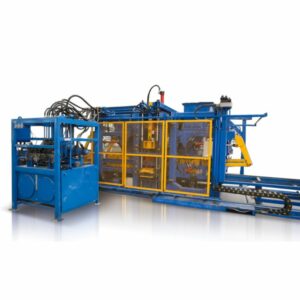Block machinery is designed to handle different aggregate sizes efficiently, allowing for flexibility in the production of concrete blocks. The handling of various aggregate sizes involves considerations in the mixing process, mold design, and overall machine capabilities.
Here’s how block machinery manages different aggregate sizes:
- Adjustable Mix Designs:
- Block machinery is equipped with mixers that can be adjusted to accommodate different aggregate sizes. The mix design can be customized to include specific proportions of coarse and fine aggregates, ensuring optimal block quality.
- Variable Hopper Designs:
- Hoppers in block machinery are often designed to handle a range of aggregate sizes. Adjustable gates or openings in the hoppers allow operators to control the flow of aggregates into the mixer, accommodating variations in size.
- Multiple Aggregate Bins:
- Some advanced block machinery features multiple aggregate bins. These bins can store different sizes of aggregates separately. The operator can then adjust the proportions from each bin to achieve the desired mix.
- Mixing Mechanism:
- The mixing mechanism within block machinery is designed to uniformly distribute aggregates throughout the concrete mix. This ensures that different sizes of aggregates are well-dispersed, contributing to the homogeneity of the final block.
- Mold Design and Compaction:
- The mold design in block machinery considers the characteristics of different aggregate sizes. block making machines for sale The molds are configured to accommodate variations in particle sizes, and the compaction process is optimized to ensure proper consolidation.
- Vibration Control:
- Vibration plays a crucial role in the compaction of concrete mixes. Block machinery is equipped with vibration systems that are adjustable to suit different aggregate sizes. This helps in achieving uniform compaction and density.
- Quality Control Sensors:
- Some block machinery is equipped with sensors that monitor the consistency of the mix during production. These sensors can detect variations in aggregate sizes, allowing for real-time adjustments to maintain quality.
- Operator Control:
- Skilled operators play a key role in managing different aggregate sizes. They can adjust settings on the block machinery based on the specific mix requirements and monitor the production process to ensure uniformity.
- Testing and Calibration:
- Periodic testing and calibration procedures are implemented to verify that the block machinery is handling different aggregate sizes correctly. This involves checking the calibration of scales, mixers, and other components.
- Material Feed Systems:
- Material feed systems in block machinery are designed to handle different aggregate sizes efficiently. Whether using conveyor belts, bucket elevators, or other feed mechanisms, these systems are adjustable to accommodate various sizes.
- Customization Features:
- Some block machinery models come with customization features that allow users to specify the aggregate sizes and proportions for a particular mix. china block machinery This level of customization ensures flexibility in production.
- Compatibility with Local Materials:
- Block machinery is often designed to be compatible with locally sourced aggregates. This adaptability allows manufacturers to use available materials without compromising the efficiency of the production process.
By incorporating these features and considerations, block machinery can effectively handle different aggregate sizes, providing versatility in block production while maintaining the required quality standards. The ability to accommodate diverse materials contributes to the adaptability of block machinery in various construction applications.
